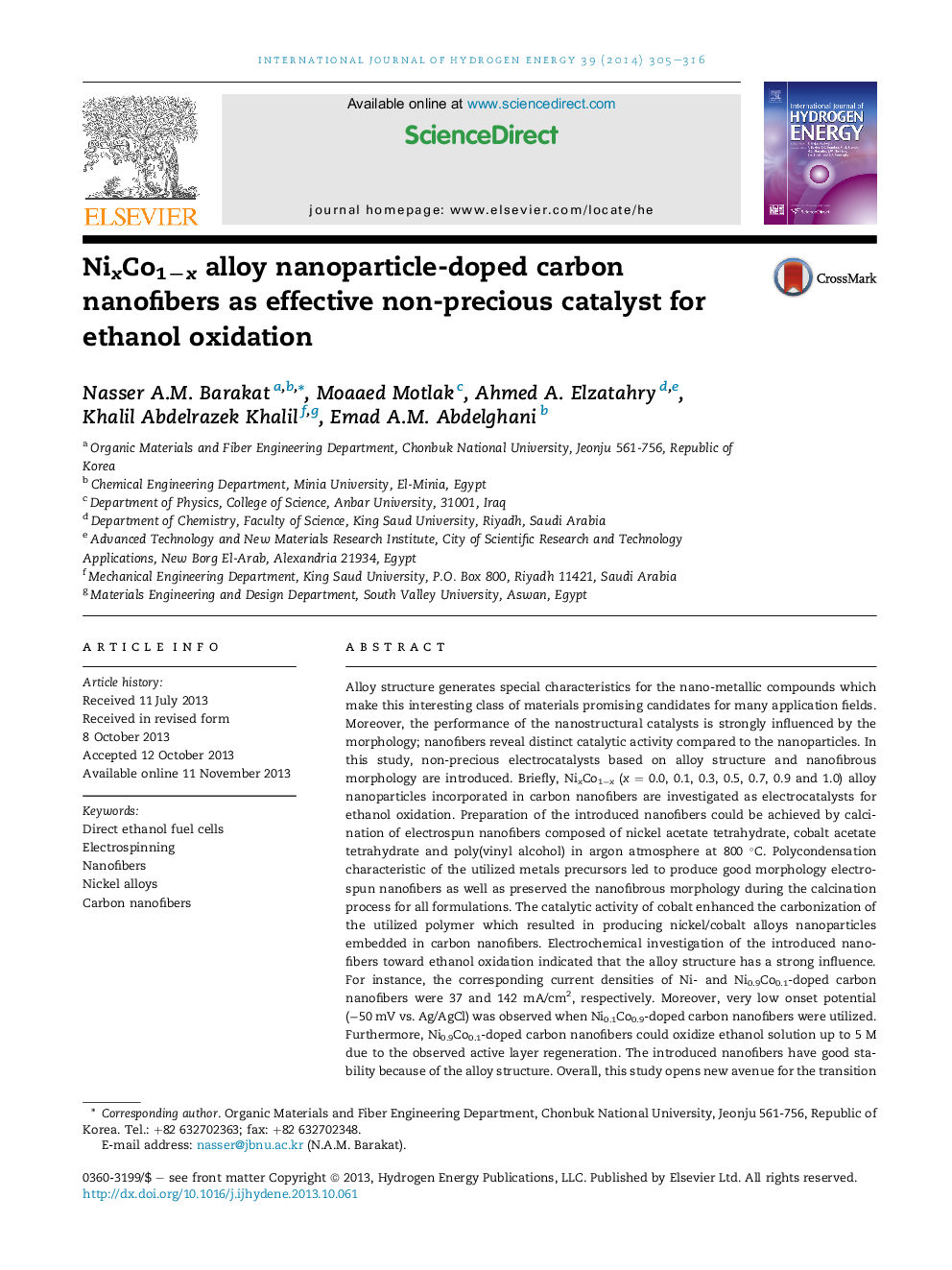| Article ID | Journal | Published Year | Pages | File Type |
|---|---|---|---|---|
| 1273942 | International Journal of Hydrogen Energy | 2014 | 12 Pages |
•Ni–Co alloy NPs in CNFs are introduced as promised catalysts for ethanol oxidation.•The introduced nanofibers reveal negative onset potential of −50 mV.•The study arises the strong influence of the alloy structure on ethanol oxidation.•The introduced nanofibers are stable so they are promised non-precious catalyst.
Alloy structure generates special characteristics for the nano-metallic compounds which make this interesting class of materials promising candidates for many application fields. Moreover, the performance of the nanostructural catalysts is strongly influenced by the morphology; nanofibers reveal distinct catalytic activity compared to the nanoparticles. In this study, non-precious electrocatalysts based on alloy structure and nanofibrous morphology are introduced. Briefly, NixCo1−x (x = 0.0, 0.1, 0.3, 0.5, 0.7, 0.9 and 1.0) alloy nanoparticles incorporated in carbon nanofibers are investigated as electrocatalysts for ethanol oxidation. Preparation of the introduced nanofibers could be achieved by calcination of electrospun nanofibers composed of nickel acetate tetrahydrate, cobalt acetate tetrahydrate and poly(vinyl alcohol) in argon atmosphere at 800 °C. Polycondensation characteristic of the utilized metals precursors led to produce good morphology electrospun nanofibers as well as preserved the nanofibrous morphology during the calcination process for all formulations. The catalytic activity of cobalt enhanced the carbonization of the utilized polymer which resulted in producing nickel/cobalt alloys nanoparticles embedded in carbon nanofibers. Electrochemical investigation of the introduced nanofibers toward ethanol oxidation indicated that the alloy structure has a strong influence. For instance, the corresponding current densities of Ni- and Ni0.9Co0.1-doped carbon nanofibers were 37 and 142 mA/cm2, respectively. Moreover, very low onset potential (−50 mV vs. Ag/AgCl) was observed when Ni0.1Co0.9-doped carbon nanofibers were utilized. Furthermore, Ni0.9Co0.1-doped carbon nanofibers could oxidize ethanol solution up to 5 M due to the observed active layer regeneration. The introduced nanofibers have good stability because of the alloy structure. Overall, this study opens new avenue for the transition metals alloys and the nanofibrous morphology to produce novel and effective non-precious electrocatalysts.
Graphical abstractFigure optionsDownload full-size imageDownload as PowerPoint slide
